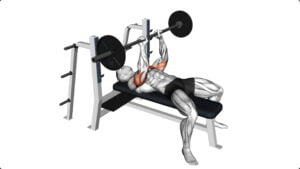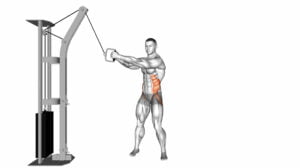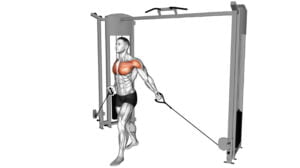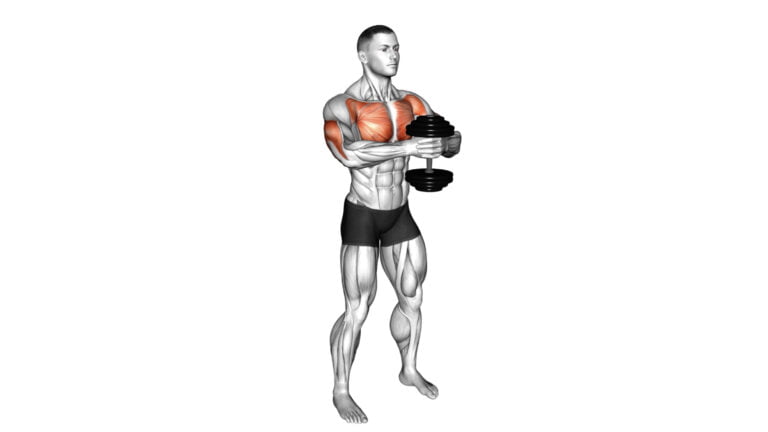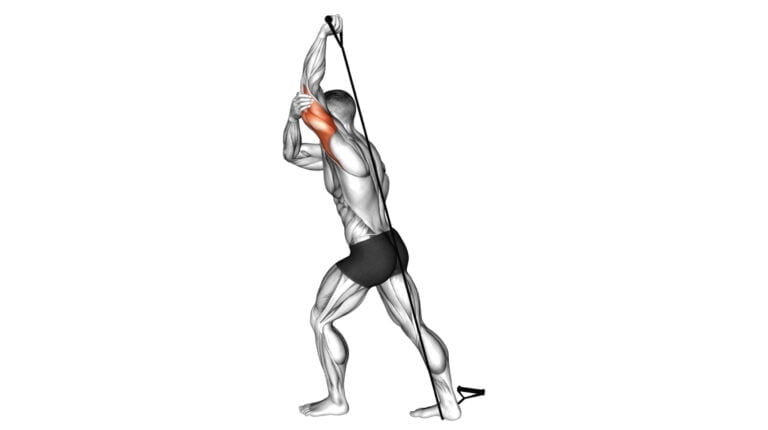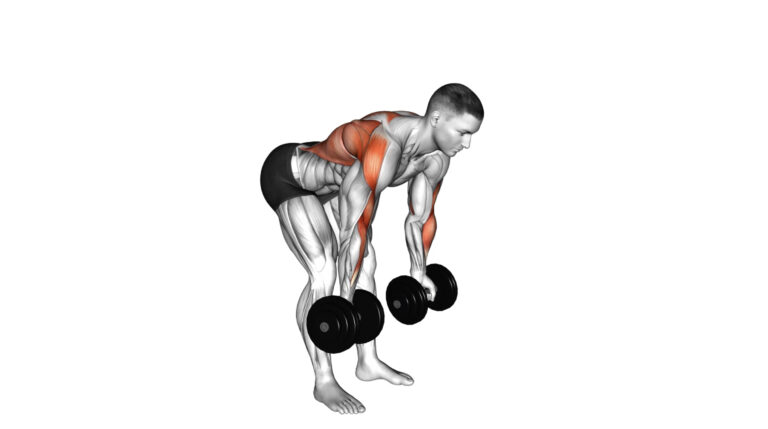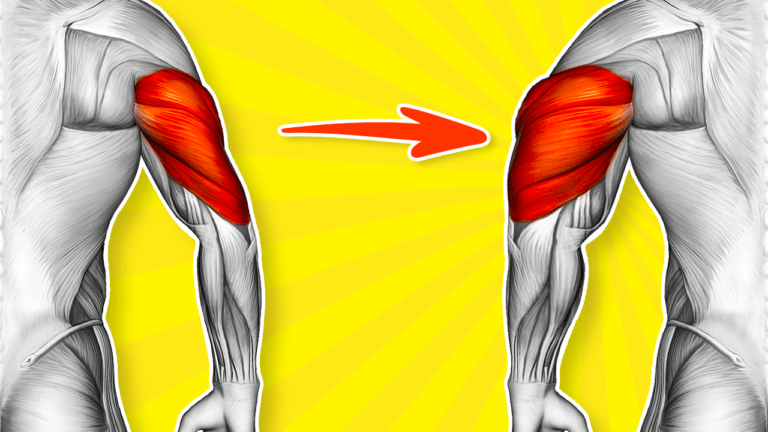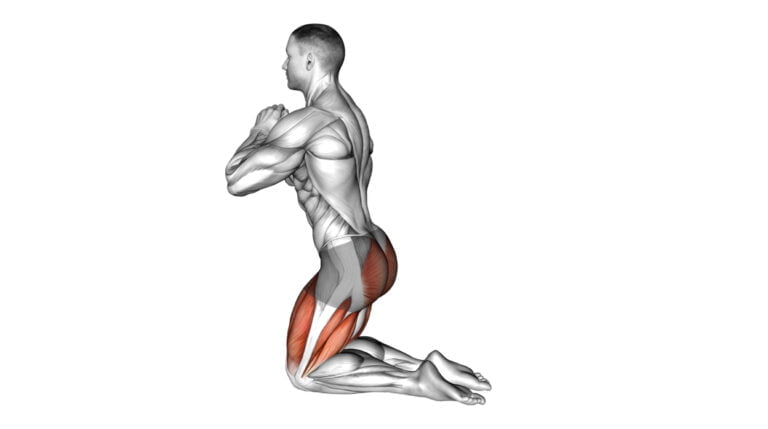8 Cable Trap Exercises To Sculpt Strong And Defined Traps
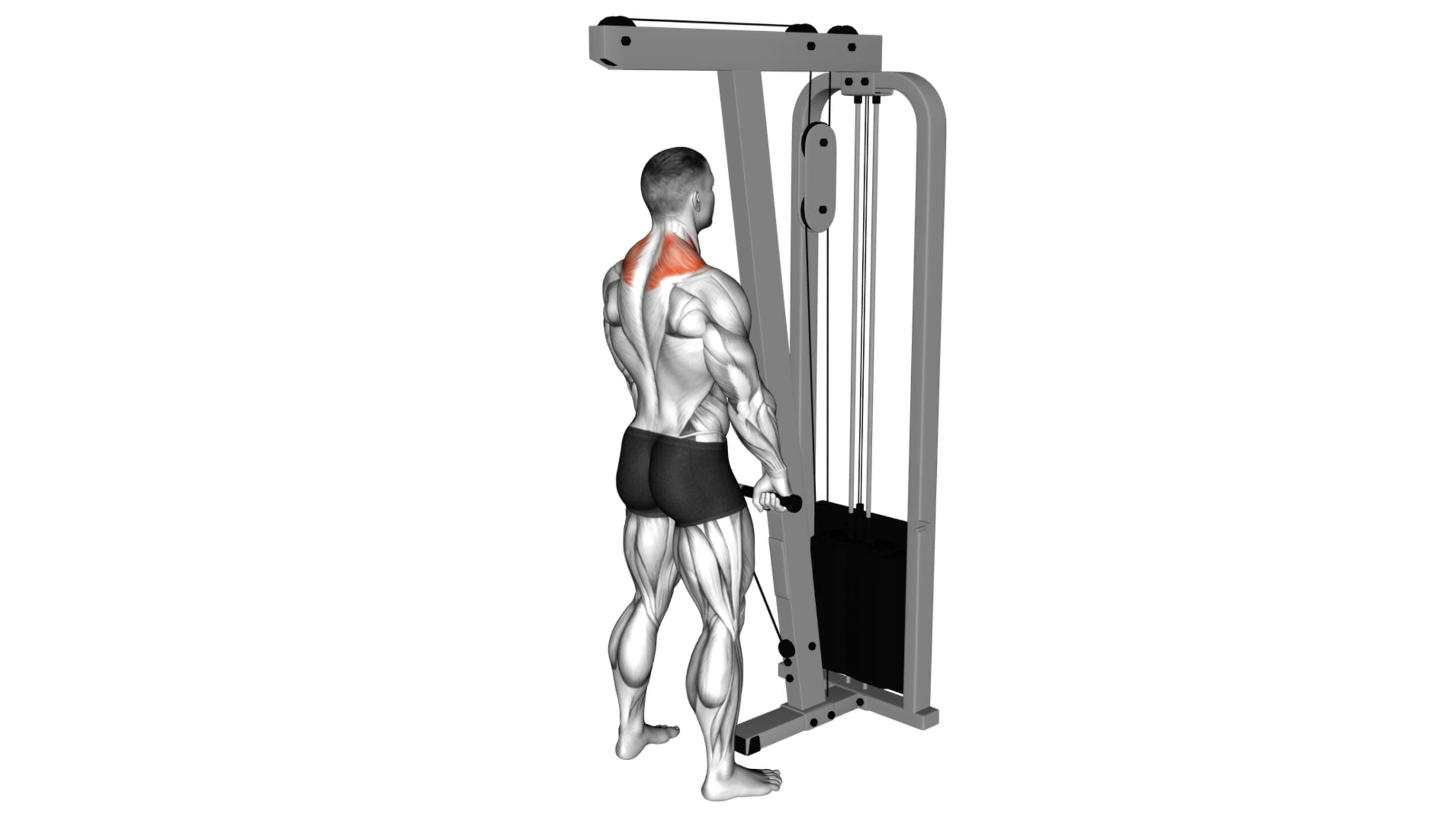
If you’re aiming to give your traps the kind of attention they deserve, cable trap exercises are a game-changer. Often overshadowed by their more showy neighboring muscles like pecs and biceps, the trapezius—a diamond-shaped muscle spanning from your neck down to the middle of your back—plays a key role in both function and aesthetics.
As someone who’s spent years navigating the trenches of fitness training, I can tell you that well-developed traps are not just for holding up your shoulders; they’re crucial for overall upper body strength and posture.
Let’s set something straight: those well-defined, mountainous shoulder muscles that stand out under any shirt aren’t built by shrugs alone. This article will pull back the curtain on eight top-tier cable movements designed specifically to target every fiber of your trapezius muscle.

With consistent practice, these exercises can transform the way your upper body looks and performs—no smith machine or barbells necessary. Ready to elevate those traps? Let’s dive in.
Key Takeaways
- Cable trap exercises are effective for targeting the trapezius muscles from various angles, enhancing strength and definition in your upper back.
- Proper form and technique, gradual increases in weight and reps, and the concept of progressive overload are vital to prevent injury and ensure muscle growth during cable trap workouts.
- Different cable trap exercises such as Cable Upright Row, Cable Y Raise, and Cable Shrug target specific parts of the traps for a well-rounded routine that improves posture, shoulder stability, and overall upper body strength.
- Consistency in performing these cable exercises contributes greatly to not only achieving an aesthetic appearance but also building functional fitness for daily activities.
- Incorporating a variety of cable trap exercises into your workout routine can lead to noticeable improvements in muscle size and definition when paired with discipline and effort.
Understanding the Traps Muscle
The trapezius muscle, or traps, is a large triangular-shaped muscle that spans the upper back and neck. It plays a vital role in shoulder movement and stability, making it essential for everyday activities as well as strength training exercises.
Training the traps can lead to improved posture, reduced risk of shoulder pain, and a more defined upper body appearance.

What is the Traps Muscle?
Your traps muscle, or trapezius, is that diamond-shaped powerhouse spanning from the back of your neck down to the middle of your spine and stretching out over your shoulder blades.
It plays a starring role in shrugging, neck movements, and keeping your shoulders squared. Picture it as a superhero cape made up entirely of muscle fibers—upper fibers near the neck for lifting those shoulder blades toward your ears; middle ones along the upper back for pulling them back; lower fibers running down toward your lower back to assist in moving the shoulder blade down.
This muscle group isn’t just about giving you an impressive silhouette; it’s essential for stabilizing and mobilizing one of the most intricate structures in our bodies: the shoulder girdle.
With each section responsible for distinct actions, strong traps contribute greatly to everyday motions like carrying bags or even maintaining good posture while sitting or standing.
Cable exercises specifically target these muscles with precision by applying unyielding tension throughout each move—a must-have tool to carve out strength and definition in this key area of a well-rounded physique.
Functions of the Traps Muscle
The traps muscle stretches from the neck to the upper back, playing a pivotal role in moving and stabilizing both shoulder blades and neck. This powerhouse of a muscle helps lift your shoulders, supports carrying heavy objects, and is crucial during weightlifting exercises like snatches or deadlifts.
It’s not just about movement; the trapezius muscles also help maintain good posture by keeping your spine aligned whether you’re sitting at a desk or standing upright.
During workouts that target the traps, such as barbell shrugs and cable rows, these muscles get an intense workout. The lower fibers of this muscle group are engaged when performing movements requiring scapular depression or retraction – think about pulling your shoulder blades down and together.
By regularly challenging these muscles through various strength exercises involving elevation, rotation, and retraction of the shoulder complex, you can improve overall upper body strength while crafting well-defined traps that augment balance across the rear deltoids, rotator cuff muscles, and lats for functional fitness excellence.

Benefits of Training the Traps Muscle
Stronger traps muscles pave the way for better posture, as they play a crucial role in aligning and stabilizing the spine and shoulder blades. Training this muscle group lowers your chances of experiencing neck and shoulder discomfort, helping you stay active and pain-free.
A robust set of traps also amps up your upper body strength, making everyday tasks like lifting groceries or carrying children much easier.
Focus on building those traps to create a more proportionate figure with symmetrical lines that enhance both appearance and physical performance. Plus, with powerful traps, you’ll find it easier to excel in activities that involve heavy lifting—whether you’re at the gym or moving furniture at home.
Embrace these exercises; each rep contributes not only to an aesthetically pleasing silhouette but also bolsters functional fitness for life’s many demands.
Top 8 Cable Trap Exercises for Strong and Defined Traps
Incorporating cable trap exercises into your workout routine can help sculpt and strengthen your traps, giving you a more defined upper body. These exercises target the trapezius muscles from different angles for maximum results.
1. Cable Upright Row
The Cable Upright Row is a top 8 cable trap exercise that targets the trapezius muscles. With an adjustable grip attachment on a cable machine, this movement involves pulling the cable straight upward towards the chin.
It contributes to improving shoulder stability, mobility, and strengthening upper back muscles.
This exercise helps with shoulder and neck movements while engaging the trapezius muscles effectively. When combined with other cable trap exercises, it adds value to a well-rounded trap workout routine.
2. Cable Y raise
The Cable Y raise specifically targets the upper trapezius muscles, helping to build strength and definition in this area. Using a cable machine with a handle attachment, pull the handle upward and outward in a Y-shaped motion to perform this exercise.
By incorporating Cable Y raises into your routine, you can effectively target and strengthen the upper traps, leading to more sculpted and defined trap muscles.
Moving on from the Cable Y raise, let’s explore another effective exercise that targets the traps – the Cable Bent Over Reverse Grip Row. This exercise is particularly beneficial for engaging different parts of the trapezius muscles for an overall well-rounded workout.
3. Cable Bent Over Reverse Grip Row
The Cable Bent Over Reverse Grip Row is an effective exercise targeting the trapezius muscles. By using a reverse grip, this movement better engages and strengthens the traps. It’s crucial to maintain proper form throughout the exercise to prevent injury and maximize its benefits.
This exercise can be seamlessly integrated into a comprehensive trap workout routine for optimal results in building strong, defined traps.
4. Cable Elevated Row
The cable elevated row directly targets the trapezius muscles, enhancing strength and definition. Using a cable machine with a handle attachment set at a low position, this exercise involves pulling the handles up toward the chest while keeping the elbows high.
By adjusting the angle of pull, individuals can effectively target different areas of their trapezius muscles for comprehensive development.
As part of a well-rounded trap sculpting routine along with other cable trap exercises, the cable elevated row contributes to improved posture and shoulder stability. This workout is essential for those aiming to strengthen their traps while also reaping functional benefits in daily activities and overall upper body strength.
5. Cable One Arm Lateral Raise
Transitioning from the Cable Elevated Row to the Cable One Arm Lateral Raise, this exercise hones in on the lateral head of the deltoid muscle. By targeting this area, it effectively builds width and definition in the shoulders.
The consistent resistance provided by a cable machine contributes to optimal muscle engagement, while proper form and control are vital for reducing injury risk and maximizing benefits.
6. Cable Cross-over Revers Fly
The Cable Cross-over Reverse Fly is a powerhouse exercise that targets the upper traps and enhances shoulder stability and strength. By pulling the cables out to the sides with arms straight, it effectively engages the traps and rear deltoids.
Proper form and control are crucial for maximum trap activation while minimizing injury risk. Adding this exercise to your routine can help you build strong, defined traps for a more sculpted appearance.
You can also vary resistance levels to continuously challenge your traps and promote muscle growth.
7. Cable Standing Face Pull
Transitioning from the dynamic movement of the Cable Cross-over Reverse Fly, we move to another effective cable trap exercise, the Cable Standing Face Pull. This exercise specifically targets the traps and upper back muscles while also engaging the rear deltoids, rhomboids, and upper trapezius muscles.
By incorporating this exercise into your trap workout routine, you can work towards sculpting stronger and more defined traps.
Maintaining proper form is crucial for maximizing effectiveness and reducing the risk of injury. Focus on establishing a strong mind-muscle connection to ensure that momentum is not relied upon during this movement.
8. Cable Shrug
The cable shrug is a key exercise for targeting the trapezius muscles, which are crucial for building a strong and defined upper back. Using a shoulder-width grip on the cable machine, lift your shoulders up toward your ears to engage the traps effectively.
By incorporating the cable shrug into your workout routine alongside other trap exercises, you can achieve comprehensive development of this muscle group.
Focusing on maintaining proper form and control throughout each repetition will help prevent injury and optimize results from the cable shrug. This exercise is an effective way to build strength and definition in the traps, making it an essential addition to any trap-focused workout regimen.
Tips and Best Practices for Cable Trap Workouts
Ensure proper form and technique when performing cable trap exercises to avoid injury and maximize results. Gradually increase weight and reps as you progress, and focus on progressive overload to continue challenging your traps for growth and strength.

Proper form and technique
Maintain proper posture throughout the exercises by keeping your chest up, shoulders back, and core engaged to avoid putting unnecessary strain on the back. Use a controlled and slow movement during the exercises to ensure the proper engagement of the trap muscles and prevent momentum from taking over.
Focus on squeezing the traps at the top of each movement for maximum effectiveness, all while consciously contracting them. Adjusting cable weight is critical to performing these exercises with proper form and without using excessive momentum or swinging.
Shrugging shoulders excessively should be avoided as this can lead to unnecessary tension on the neck and upper back.
Gradually increase weight and reps
Gradually increasing weight and reps is essential for progressing in cable trap workouts and building strong and defined traps. It is recommended to start with a weight that allows for proper form and gradually increase the weight as strength improves. Here are some tips for gradually increasing weight and reps:
- Start with a weight that challenges you, but still allows for proper form and technique.
- Once you can complete the recommended reps with good form, consider increasing the weight by small increments.
- Focus on progressive overload by consistently challenging your traps with increased resistance over time.
- Gradually increase the number of reps as your strength improves to further stimulate muscle growth.
- Listen to your body and avoid pushing too hard to prevent injury while progressively increasing weight and reps.
- Stay consistent with your workouts and be patient, as results may not be immediate but will come with dedication and perseverance.

Choosing the right weight
Select a weight that allows you to execute the exercises using proper form and technique while maintaining your full range of motion. Commence with a lighter resistance and incrementally up the challenge as you grow more comfortable with the movements.
The objective is to stimulate your muscles without straining or feeling discomfort.
Recommended Sets And Reps
Determining the appropriate number of sets and reps for your cable trap workouts is pivotal in achieving muscular strength and definition. Below is an HTML table that outlines a general guideline to help you structure your training sessions effectively.
| Exercise | Sets | Reps | Notes |
|---|---|---|---|
| Cable Upright Row | 3-4 | 8-12 | Begin with a comfortable weight to ensure proper form. |
| Cable Y Raise | 3-4 | 8-12 | Keep movements controlled to target the traps effectively. |
| Cable Bent Over Reverse Grip Row | 3-4 | 8-12 | Engage your core for stability during this movement. |
| Cable Elevated Row | 3-4 | 8-12 | Adjust the cable height to align with shoulder level. |
| Cable One Arm Lateral Raise | 3-4 | 8-12 | Perform each side separately to maintain balance. |
| Cable Cross-over Reverse Fly | 3-4 | 8-12 | Focus on squeezing the shoulder blades together. |
| Cable Standing Face Pull | 3-4 | 8-12 | Use a rope attachment to maximize engagement of the traps. |
| Cable Shrug | 3-4 | 8-12 | Pause at the top of the shrug for optimal trap activation. |
This table serves as a guideline for those embarking on their journey to build strong and defined traps. Beginners should prioritize proper form over heavy weights, and as your strength increases, you can progressively overload the muscles by either increasing the weight or the number of reps. Always listen to your body, and ensure rest periods are sufficient to recover but brief enough to keep the workout challenging.
Progessive overload
Implementing progressive overload is critical for maximizing the effectiveness of cable trap workouts. Gradually increasing the weight, volume, or intensity of exercises challenges the muscles and promotes growth.
Whether it’s adding more weight on the cable machine for shrugs or upright rows, or increasing sets and reps for each exercise, progressive overload continually pushes the muscles to adapt and grow stronger while preventing plateaus.
It’s important to listen to your body and avoid overtraining by allowing adequate rest and recovery between workouts while implementing progressive overload. This ensures sustained progress in strength and muscle development without risking injury or burnout.
Conclusion

Incorporate these cable trap exercises into your routine for powerful and defined traps. Mastering proper form is crucial for maximizing the benefits of each exercise. Consistency in training and gradual progression will lead to noticeable results over time.
Remember, sculpting strong and defined traps requires dedication and effort, but the payoff is well worth it. Embrace the challenge and go conquer those cable trap exercises!
FAQs
1. What are the best cable exercises for building strong traps?
To build strong and defined traps, include cable exercises like face pulls, shrugs, and upright rows that target your upper arms and back muscles.
2. Can I strengthen my rear delts with cable trap exercises?
Absolutely! Exercises such as reverse cable flyes specifically work on your rear delts and help in promoting shoulder joint health.
3. Do trap workouts with cables involve other muscle groups too?
Yes, many trap exercises also engage surrounding muscles like the levator scapulae in your neck or the serratus anterior near your ribs for a comprehensive strength session.
4. How often should I do these 8 cable trap exercises?
Incorporate these movements into your routine twice a week to effectively develop both strength and conditioning in your traps and supporting muscles.
5. Is it necessary to use heavy weights during these exercises for my traps?
A balanced approach works best; using free-weight or pulley systems at a challenging yet manageable weight will lead to muscle contraction without risking injury.
6. Are there any compound movements included in the 8 cable trap exercises?
Definitely! You’ll find compound exercise options that simultaneously work multiple joints and muscles groups, maximizing efficiency during your workout sessions.

Author
Years ago, the spark of my life’s passion ignited in my mind the moment I stepped into the local gym for the first time. The inaugural bead of perspiration, the initial endeavor, the very first surge of endorphins, and a sense of pride that washed over me post-workout marked the beginning of my deep-seated interest in strength sports, fitness, and sports nutrition. This very curiosity blossomed rapidly into a profound fascination, propelling me to earn a Master’s degree in Physical Education from the Academy of Physical Education in Krakow, followed by a Sports Manager diploma from the Jagiellonian University. My journey of growth led me to gain more specialized qualifications, such as being a certified personal trainer with a focus on sports dietetics, a lifeguard, and an instructor for wellness and corrective gymnastics. Theoretical knowledge paired seamlessly with practical experience, reinforcing my belief that the transformation of individuals under my guidance was also a reflection of my personal growth. This belief holds true even today. Each day, I strive to push the boundaries and explore new realms. These realms gently elevate me to greater heights. The unique combination of passion for my field and the continuous quest for growth fuels my drive to break new ground.





